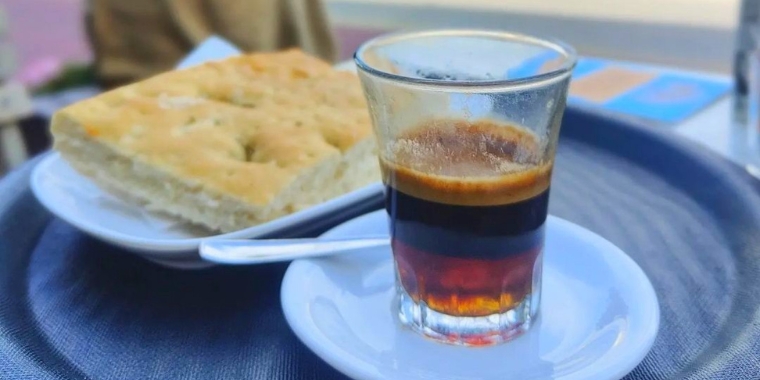Learning about different types of coffee beans can help you find the right coffee for your taste. The choice of beans can make a hell of a difference to your brew.
Why?
Temperature, humidity, and altitude heavily affect the taste of the coffee. So much so that the same variety of beans grown in different parts of the world will taste noticeably different from each other.
I’m sure most of you know about Arabica and Robusta. Well, there’s much more to coffee beans than just these two commercial varieties. In this guide, I am going to talk in detail about coffee bean varieties.
Let’s get to it-
4 Different Types of Coffee Beans
There are over a hundred types of coffee species. But, for now, we’ll stick to talking about commercially produced varieties.
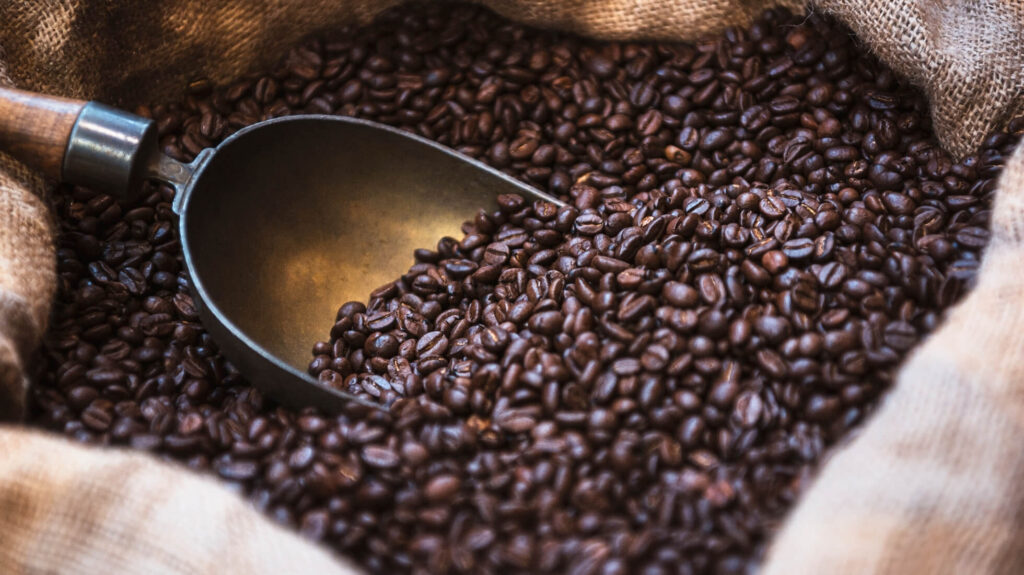
Arabica vs Robusta vs Liberica vs Excelsa – Quick Comparison Table
There are 4 commercially recognized coffee bean varieties:
| Attribute | Arabica | Robusta | Liberica | Excelsa |
| Origin | Ethiopia | Sub-Saharan Africa | West Africa | Southeast Asia |
| Altitude | 2,000-6,000 ft | 0-2,500 ft | 1,500-3,500 ft | 1,000-4,000 ft |
| Caffeine | Low to medium (1-1.5%)* | High (2-2.7%)* | Medium (1-1.5%)* | Medium (1-1.5%)* |
| Acidity | High | Low | Medium | Medium to high |
| Taste Profile | Medium to full-bodied, complex flavors (notes of berry, chocolate, hazelnut, sugar, and persimmon) | Bold, strong flavors; sometimes described as burnt with rubber notes; high-quality beans have hints of rum and chocolate | Balanced cup with elegant floral and fruity notes; woody and herbal notes when brewed | Tart and fruity notes combined with dark, roasty notes |
| Ideal for | Black coffee aficionados, specialty coffee roasters, and coffee shops | Milk, creamer, and sweeteners lovers; people who drink coffee for the caffeine buzz | Blending with Arabica to create unique flavors | Enhancing depth of flavors in Robusta-Arabica blends |
| Market share | 59.4% | 39.6% | < 1% | < 1% |
Arabica Beans, Coffea arabica
Almost all high-quality coffee beans have “100% pure Arabica” written on the package. Not only in the U.S. but in several parts of the world, Arabica beans are regarded as the gold standard.
Arabica beans account for almost 59.4% of the total coffee crop yield (source). The ideal growing conditions for Arabica coffee include lots of rainfall and shade. The best-in-class Arabica beans grow at high altitudes.
Taste of Arabica Coffee
Arabica coffee is a medium to full-bodied brew. It is teeming with complex flavors. Typical cup profiles include notes of berry, chocolate, hazelnut, sugar, and persimmon.
Due to its smooth, balanced flavors – most specialty coffee roasters and coffee shops rely on Arabica beans.
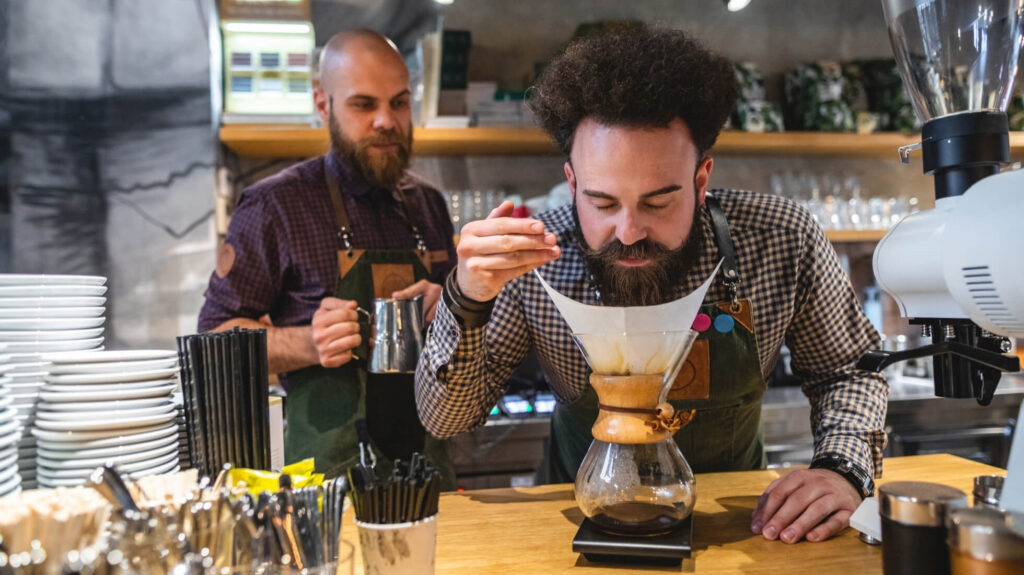
The smell of Arabica Coffee
Unroasted Arabica beans smell like blueberries and roasted beans. They have a sweet fragrance, often resembling the mild scent of jasmine flowers.
Why Are Arabica Beans So Expensive?
Partly due to their complex, premium taste and partly due to the amount of hard work that goes into cultivating the crop.
Arabica beans take constant pruning and the cherries have to be handpicked. Some of the more premium variants are even hand-sorted.
Arabica beans are susceptible to bacterial halo blight. This disease is common in high-altitude areas with plenty of rainfall, and strong winds.
This much-dreaded coffee disease can ruin the entire crop. A lot of work goes into safeguarding the plants from diseases. All these factors consequently lead to a steeper price tag.

Who Should Drink Arabica Coffee?
The short answer is for anyone who drinks coffee for the taste and not just for the caffeine buzz.
Although Robusta beans contain twice the caffeine. But taste-wise, it doesn’t hold a candle to Arabica.
That being said, not every coffee-drinking individual is a big fan of pure Arabica coffee. This is especially for those with a sensitive back palate.
They find it too thin and sour. People who like their coffee strong and bitter or with lots of creamer or milk won’t sing the praises of Arabica.
So who is it for?
Front palate people will love the nuanced flavors and sweet aroma of Arabica. Much of the subtler notes of Arabica are lost when you put creamer or milk in it.
If you’re a black coffee aficionado, blended or single-origin Arabica should be your go-to coffee.
15 Sub-varieties of Arabica Coffee Beans
Arabica accounts for more than half of the world’s total coffee production. It comes in several varieties. Each variety has its own unique set of characteristics. Below I have briefly described the 15 most popular variants of Arabica beans-

1. Kona Coffee Beans
Native to the north and south Kona districts of Hawaii, Kona is one of the most expensive coffee beans in the world.
The volcanic soil of Mauna Loa and Hualalai is crisp, clean, and bright taste with a pleasant aroma. A trained palate will be able to taste notes of fruit, milk chocolate, honey, and brown sugar in it.
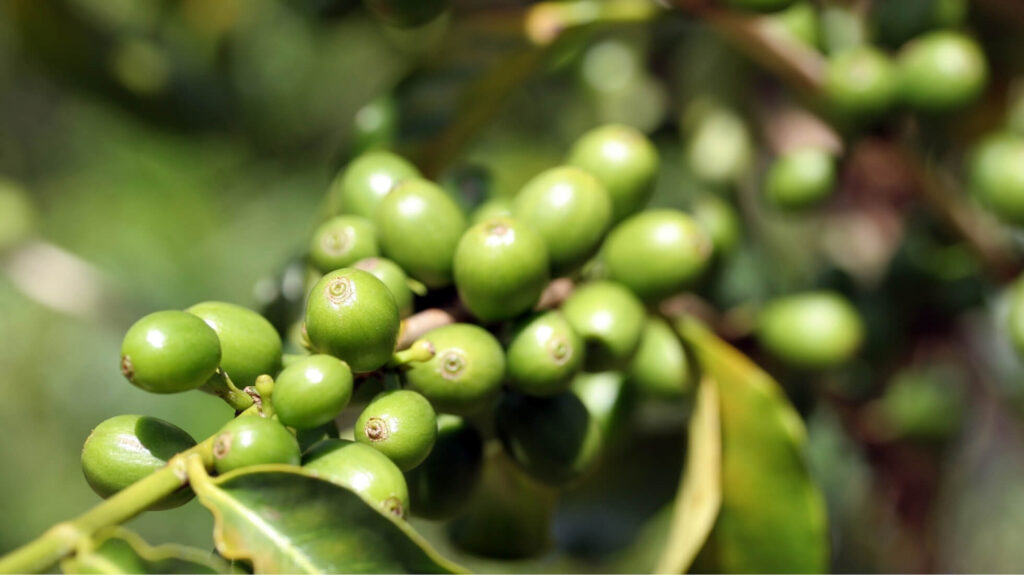
2. Jamaican Blue Mountain Coffee
This highly prized, rare variety traces its roots to Jamaica. It’s expensive because Blue Mountains have very limited space for crop cultivation.
The most distinct characteristic of JBM coffee is its sweetness. It yields a smooth decoction with just the right amount of acidity and zero bitterness. If you are okay with paying top dollars for a truly refined brew, look no further.
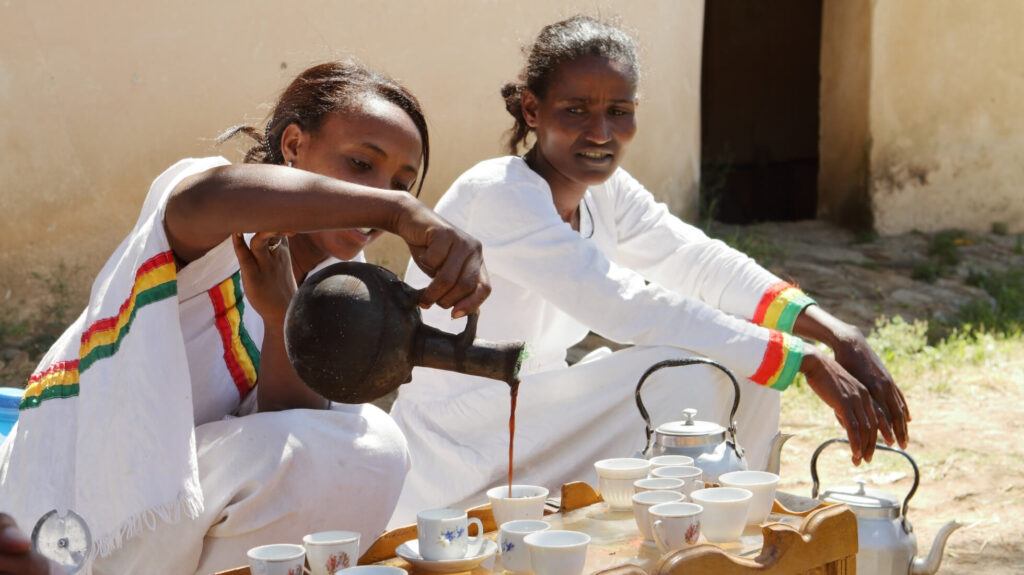
3. Geisha Beans
This strain of Arabica originated in Gori Gesha Forest, Ethiopia. The profile of geisha coffee exhibits floral notes with hints of chocolate and black tea.
4. Bourbon
A favorite among the micro-batch coffee roasters, the Bourbon cultivar originated in Yemen. If a classic well-balanced cup is what you’re after, look for the Bourbon variety in the gourmet section.
Its cup profile exhibits bright acidity paired with mild fig sweetness and intense notes of dark chocolate.
5. Caturra
Caturra is a mutant variety of bourbon beans. It is extensively cultivated in the higher altitudes of Brazil and Colombia. This gourmet Arabica also yields a light-bodied brew with undertones of cherry.
6. Catimor
A hybrid variety of Caturra, Catimor is a mainstay of the Indonesian coffee scene. The brew exhibits sour acidity and a long-lingering sweet aftertaste.
7. Castillo
Another hybrid of Caturra, Catillo’s taste profile is less complex than that of Catimor.
8. Typica
The low production of Typica makes it rare to find. Artisanal coffee roasters prefer these beans for their crisp acidity, floral notes, and sweet aftertaste.
9. Mundo Novo
A hybrid of Typica and Bourbon, Mundo Novo mostly grows in Sumatra and various regions of Brazil. Mundo Novo has a higher resistance to common coffee tree diseases such as leaf rust.
It yields a medium-bodied brew with notes of dark chocolate, caramel, cinnamon, and apple.
Mundo Novo is a very popular choice of coffee for espresso.
10. Villalobos
It is a natural mutation of Bourbon and is widely planted in Costa Rica. Now a staple of Central and South America, this variety yields a very high crop yield. If you like your coffee without sweeteners, this coffee will tickle your tastebuds.
11. Pacamara
This cultivar is native to El Salvador. Specialty coffee roasters swear by Pacamara.
The crossbreeding between Typica and Bourbon lends an exceptionally balanced cup. Its cup profile is characterized by citric acidity, outstanding sweetness, and floral notes.
12. Ethiopian Heirloom
I may have to set up a whole new website just to catalog all the indigenous varieties of Ethiopian Heirloom.
These cross-breed varieties yield mildly acidic, delicate brew with floral and citrus notes. Some varieties have delicate herbal undertones with a very pleasant mouthfeel.
13. Ethiopian Yirgacheffe
Yirgacheffe coffee adds the “L” in luxury coffee. The plants grow at an elevation of 1700-2200 meters above sea level in Southern Ethiopia. Very distinct floral notes and notes of wine, berries, and chocolate produce an epic brew.
14. Jember
It is an Indonesian hybrid strain of Typica. Jember would be a great option for those who prefer rich, heavy-bodied coffee. Cup profiles are characterized by the notes of maple, caramel, and brown sugar.
15. Kent
This hybrid is cultivated in the Kent estate of Mysore, India. Kent beans deliver delicious spicy notes that blend wonderfully with their mild sweetness and low acidity.
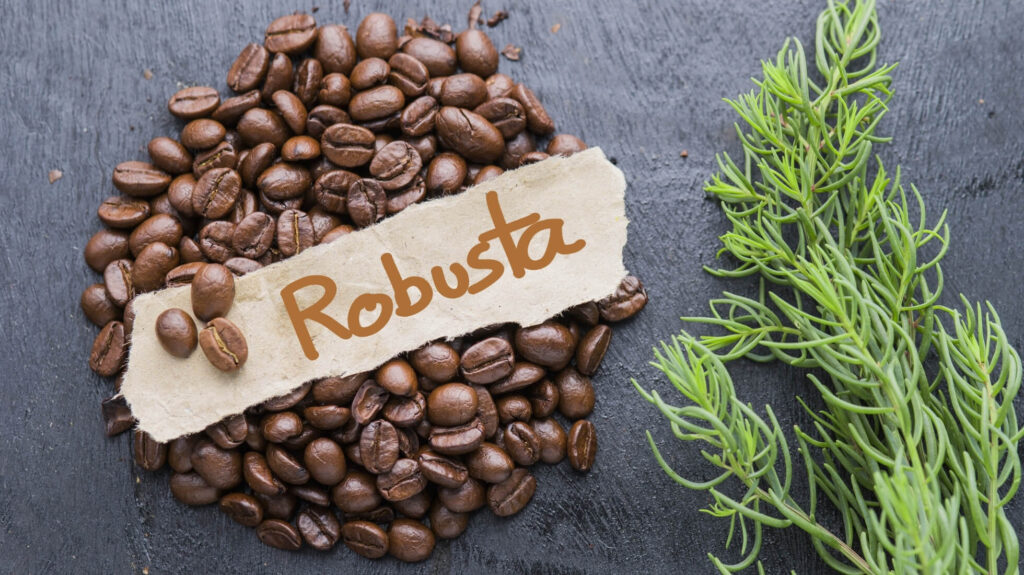
Robusta Coffee Beans, Coffea canephora
Robusta coffee beans account for 39.6% of the total coffee production in the world. The general consensus is that Robusta beans are inferior to Arabica. I 80% agree with this.
Robusta beans are easy to produce due to their high resistance to common coffee plant diseases. Therefore, the beans are very cheap. Most farmers sell Robusta beans in bulk to instant coffee manufacturers like Nestlé.
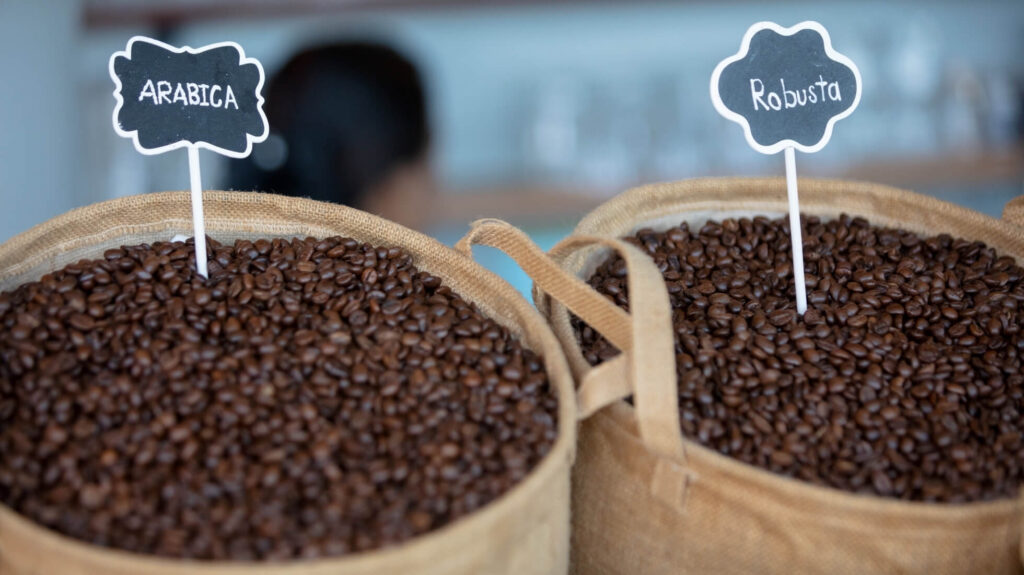
Taste of Robusta Coffee Bean
Robusta beans contain double the amount of caffeine compared to Arabica and taste quite strongly. Some would even describe the cup as burnt with very unpleasant taste notes of rubber.
I believe they are describing cheap, crappy-quality Robusta cultivated by farmers who have no idea what they are doing. Robusta doesn’t need high altitude or regular rain to thrive.
Many cafes in Europe, U.S., and Southeast Asia would create espresso house blends with 90% Arabica- 10% Robusta. I, for one, think the weight and depth of flavor Robusta brings to the cup beautifully rounds off the taste.
Robusta grown in favorable conditions and moderately roasted have a slight hint of rum and chocolate. High-quality Robusta brews are very mildly acidic, smooth, and not at all bitter.
A shining example of this would be Vietnamese coffee. This much sought-after beverage is traditionally made with Robusta beans.
The smell of Robusta Beans
Almost every premium Robusta bean variety I have come across has a slightly woody smell. The insanely dark roasted, cheaper varieties smell burnt.
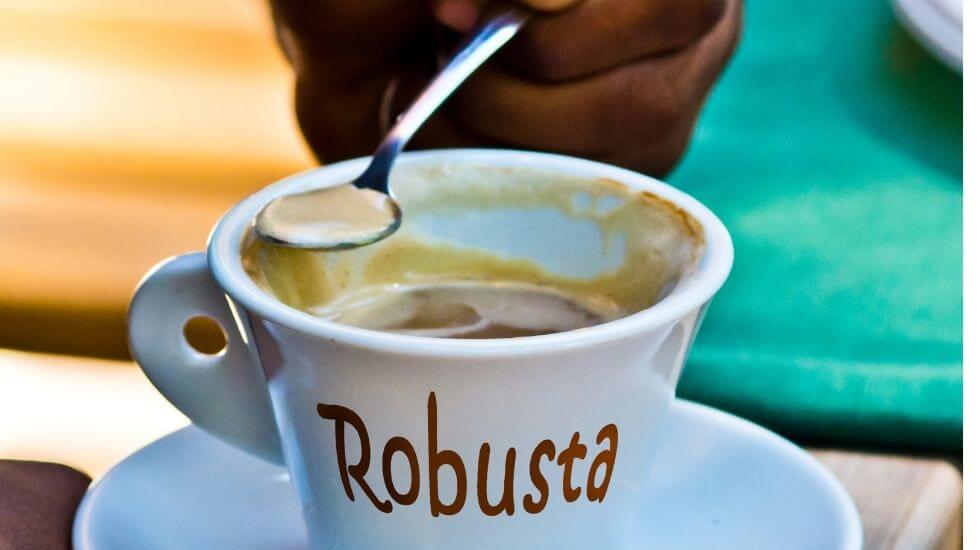
Who Should Drink Robusta Coffee?
Don’t listen to the haters. Good quality Robusta coffee is the best friend of milk, creamer, sweetener, and other additives. No amount of additives can conceal the boldness of Robusta beans. 50/50 Arabica-Robusta blends will enhance the depth and richness of your homebrew, for sure.
The high concentration of caffeine in Robusta beans makes it a great option for anyone drinking coffee solely for the buzz.
Special mention: Peaberry coffee
Peaberry is a rare but naturally occurring mutant of Arabica and Robusta. Normal coffee cherries contain two flat-shaped beans. Only 5-10% of the cherries contain a single pea-shaped bean. These one-bean coffee cherries are called peaberry coffee.
Tanzanian peaberry coffee is one of the finest coffee in the world. Its sweet wine-like aroma is hard to forget. The unique shape and careful roasting give it a delicious chocolaty sweetness and a smooth woody aftertaste.
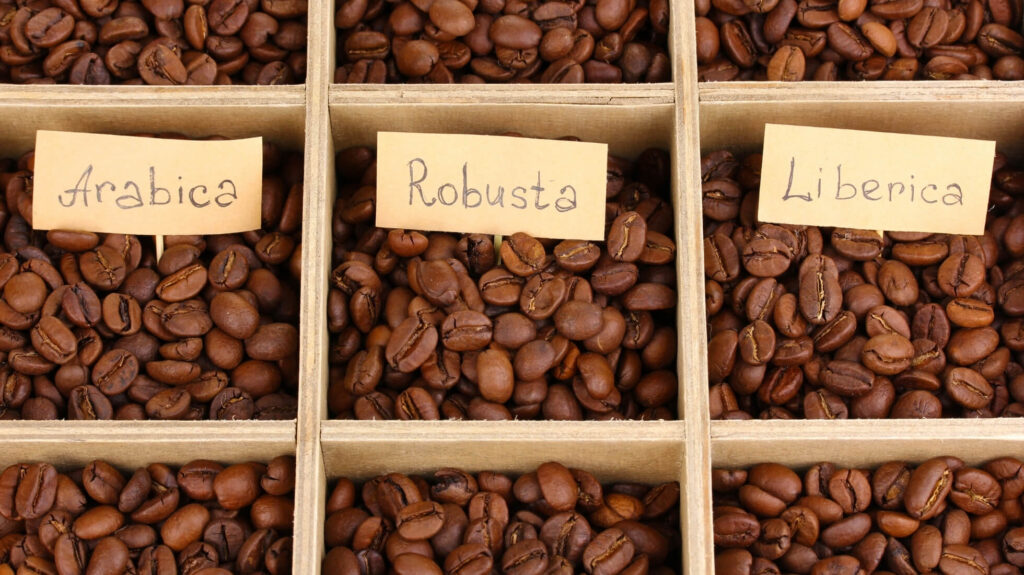
Liberica, Coffea Liberica
I didn’t know how vast the world of coffee is until I came across Liberia. Outshone by the hype of Arabica, Liberica is a revelation. The crop originated in the Liberia region of West Africa.
It rose to popularity in 1995 when coffee rust destroyed 90% of the world’s Arabica produce. Back then, the only region growing Liberia was the Philippines.
Sadly, these beans are extremely hard to come by today. Liberica coffee beans create an outstandingly balanced cup with elegant floral and fruity notes.
When brewed, the cup reveals very pleasant woody and herbal notes. The aroma of this coffee is something I won’t be forgetting anytime soon.
Having said that, some people don’t like the jungle-y, smoky taste of Liberica. However, blending 10% Liberica with 90% Arabica can yield epic results.

Excelsa, Coffea excelsa
Due to striking similarity in appearance, Excelsa is now regarded as a sub-variety of Liberica. Having tasted both, I can tell you that both are drastically different, flavor-wise.
Grown in Southeast Asia, Excelsa exhibits a noticeable amount of tart and fruity notes. When properly roasted, it combines the bright tartness with dark, roasty notes.
This melange of contrasting notes lends Excelsa a very unique cup profile. For many specialty coffee roasters, 10% of Excelsa in Robusta-Arabica blends to enhance the depth of flavors.
Important Note: Every coffee-growing region in the world has its own specialty coffee beans. Some examples would be Vietnamese Robusta, Sumatra Mandheling, Nicaraguan coffee, Colombian Supremo, and the iconic Mocha-Java blend.
All these varieties are a sub-type of the four primary bean types we discussed previously. But the majority of them are trade names for Arabica coffee.
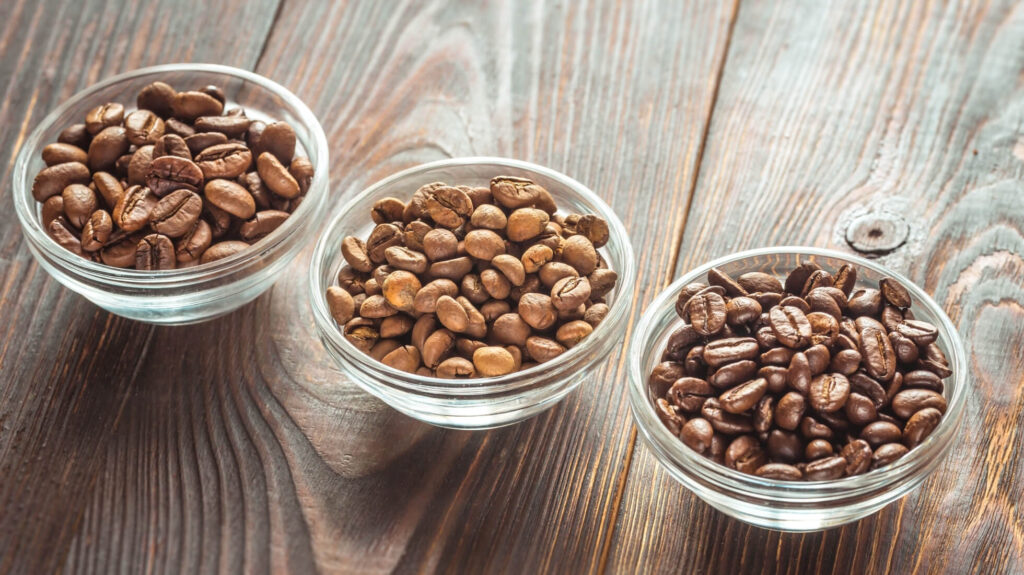
How to Pick the Right Coffee Bean to Level up Your Coffee Game
Everyone’s taste buds are wired uniquely. Some people have a more developed front palate than others. Front palate people can effectively taste the more nuanced flavors of coffee. Also, for such people, aroma matters just as much as the taste.
The highly complex flavors of Arabica and Excelsa coffee beans stimulate the front palate. These two varieties should be your go-to if you want to explore the vast world of specialty coffee.
People who taste more with their back palate would find 100% Arabica way too thin and sour for their taste. 50/50 Arabica-Robusta blends or blends containing a variety of coffee species would be the best fit for them.
Go with pure or Robusta blends if you like your coffee with lots of milk, creamer, and sugar.
Choose single-origin Arabica, Liberica, Excelsa, or a blend of these three varieties to spruce up your coffee.
Frequently Asked Questions
What are the 3 types of coffee beans?
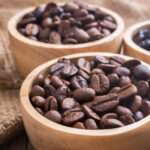
The three primary coffee bean types – Arabica, Robusta, and Liberica. There’s a 4th type too called Excelsa which is presently categorized as a sub-type of Liberica. However, their taste profile differs vastly. Therefore, some coffee experts regard Excelsa as the 4th primary coffee bean type. And so do I.
Is Starbucks Arabica or Robusta?

Starbucks reportedly uses 100% Arabica grown at high altitudes for refined, well-balanced brews. They don’t add Robusta beans in the blend due to their flat, less refined flavor.
In Conclusion
As you can see, there’s more to coffee than Arabica. Sure, its complex notes and pleasant aroma make it a connoisseur’s favorite. But you know what’s the secret ingredient of near-perfect cups you get in top cafes?
A blend containing different types of coffee beans.
So if you want my suggestions, I’d say start with a specialty blend and see where it takes you.

